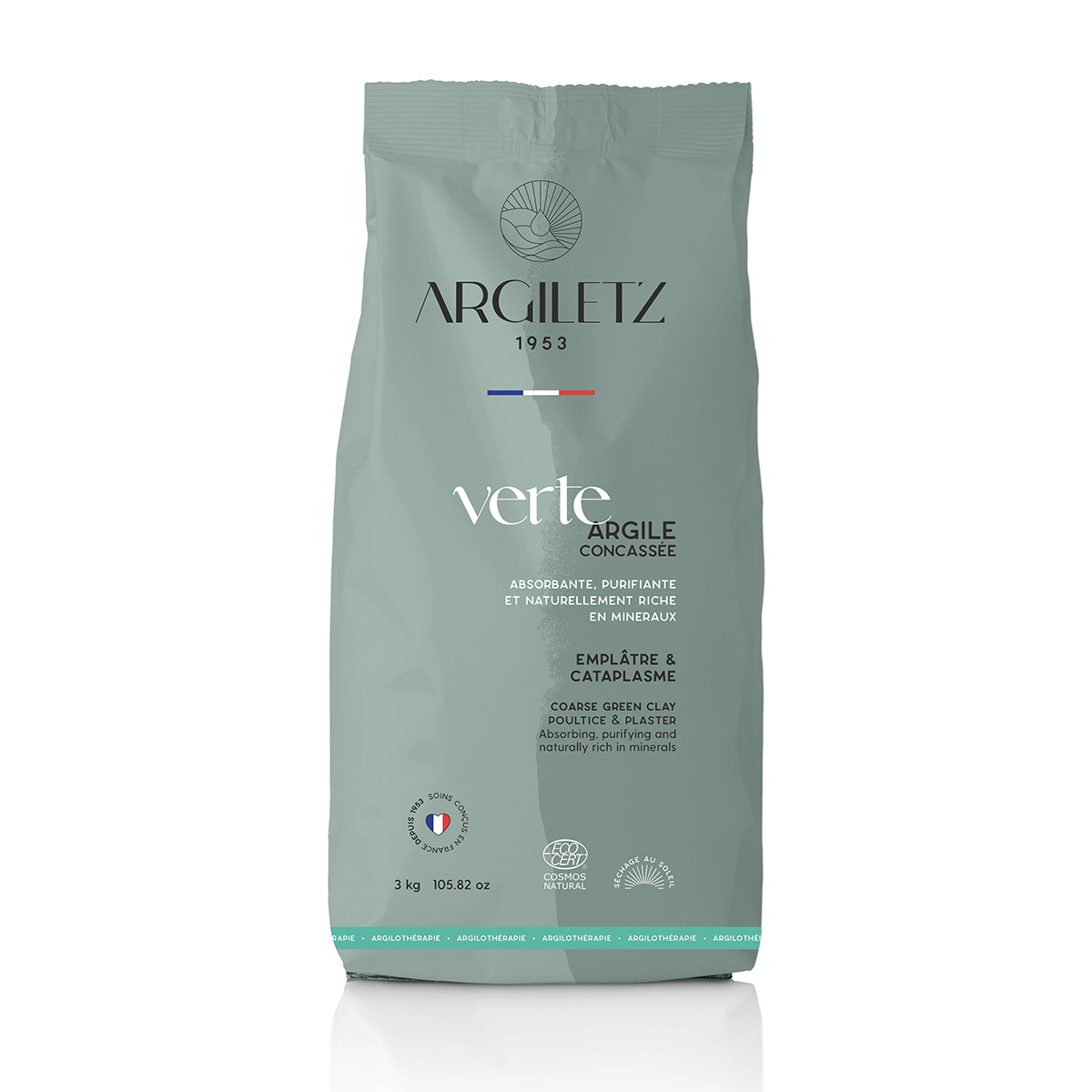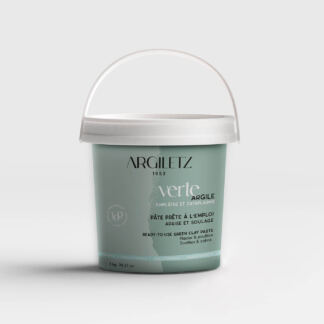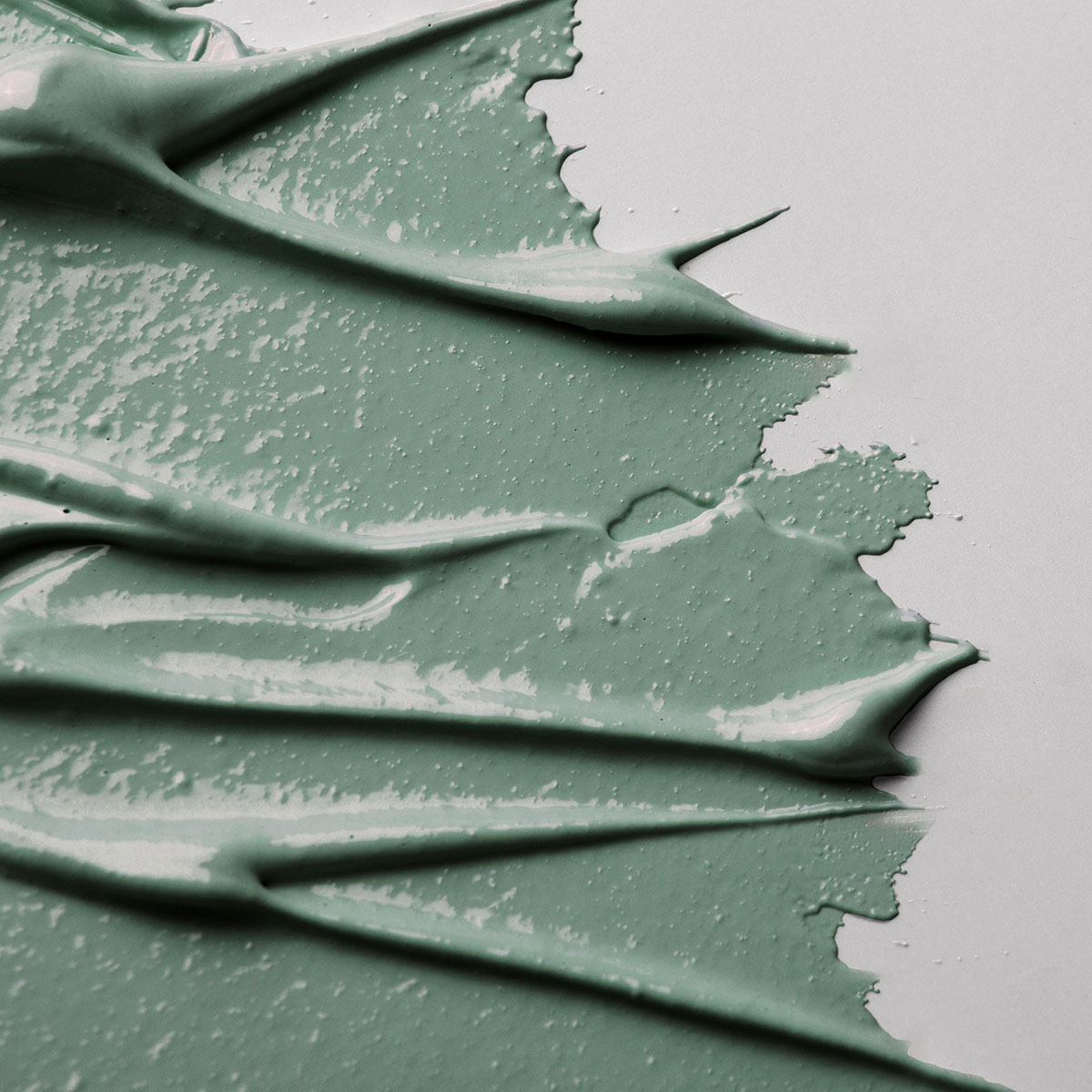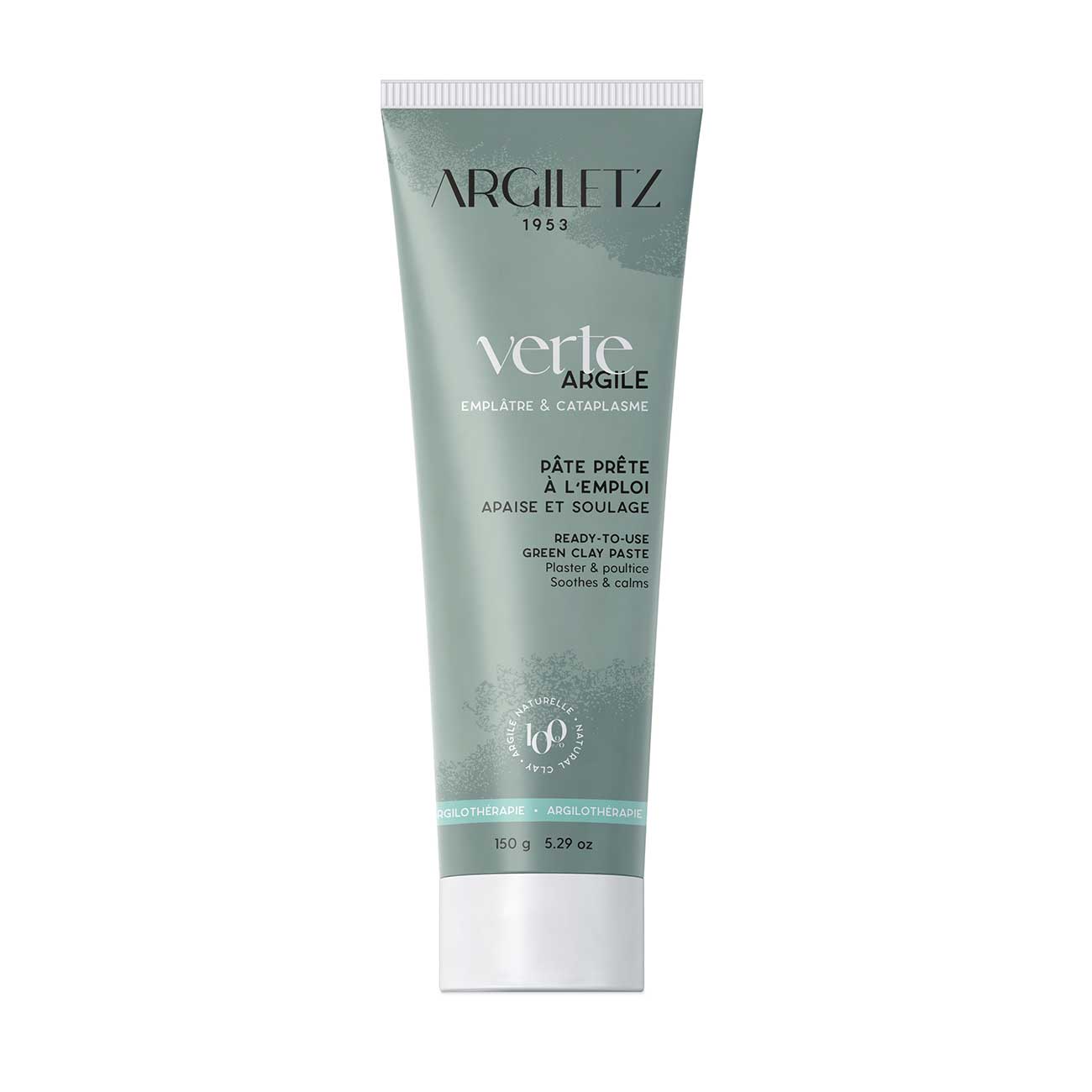Très connue et appréciée à travers le monde, l’argile est probablement l’une des roches les plus plébiscitées en cosmétique naturelle. Si l’argile verte est de loin la plus utilisée, l’argile offre une palette de couleurs étonnante comme l’argile blanche, rouge, rose, jaune ou bien le ghassoul. Le plus étonnant : chacune d’entre elle possède des propriétés qui lui sont propres. Au-delà des bienfaits de cette terre minérale pour la peau et les cheveux, l’argile est depuis des siècles utilisée pour ses bienfaits sur le corps, les muscles et les articulations, à travers une application en cataplasme. Qu’est-ce que le cataplasme d’argile ? Comment et pourquoi en appliquer ? Nous vous donnons toutes les clés pour profiter de ce soin ancestral !
Qu’est-ce que le cataplasme d’argile ?
Le cataplasme d’argile est une technique très populaire – un vrai remède de grand-mère ! – qui se transmet de génération en génération pour prendre soin du corps dans son entièreté. Elle vise à appliquer sur une zone inconfortable ou douloureuse du corps, une couche épaisse d’argile en vue de soulager, réduire l’inflammation et stimuler la guérison.
Aussi appelés « emplâtres », les cataplasmes d’argile peuvent être utilisés sur différentes parties du corps, et plus couramment sur les pieds, les jambes, les bras, les épaules, le dos et la région abdominale.
Le cataplasme est un soin 100% naturel et sans superflu. Il peut donc être appliqué quel que soit l’âge.
Quelle argile utiliser pour un cataplasme ?
Pour préparer un cataplasme d’argile, l’argile verte est de loin l’argile la plus utilisée et recommandée pour ce type d’application. Riche en minéraux et oligo-éléments tels que la silice, le fer, le potassium, le sodium, le calcium et le magnésium, l’argile verte est aussi reconnue pour ses nombreuses propriétés absorbantes, apaisantes, réparatrices, anti-inflammatoires… Vous l’aurez compris, elle est une roche minérale aux multiples facettes.
Pour un soin efficace, il convient de choisir une argile verte de qualité, pure et française. Parmi nos soins à base d’argile, notre argile verte illite est sélectionnée pour sa qualité incomparable. En plus d’être 100% française, elle est délicatement séchée au soleil, un mode de séchage que nous appliquons depuis toujours et dont nous sommes fiers ! Pourquoi ? Car ce mode de séchage est le seul à préserver toutes les vertus de l’argile sans la dénaturer. C’est en partie ce qui la rend UNIQUE et INCOMPARABLE !
Comment préparer et appliquer le cataplasme d’argile ?
La préparation
Pour préparer le cataplasme d’argile, vous pouvez utiliser de l’argile en pâte prête-à-l’emploi ou bien opter pour de l’argile en poudre ou en grain.
Le saviez-vous ? Notre argile verte est proposée dans différentes granulométries. Cela va du grain très fin qui fond instantanément au grain brut de 2cm qui nécessite plusieurs heures au contact de l’eau avant de former une pâte onctueuse. A chaque besoin sa granulométrie ! Pour vous aider à choisir celle qu’il vous faut, n’hésitez pas à consulter notre page sur les différentes granulométries de notre argile verte illite.
Si vous choisissez un tube ou un pot de pâte d’argile, aucune préparation ne sera nécessaire : la pâte offre une consistance idéale pour une application facile et rapide. Si vous optez pour de l’argile en poudre, une préparation en amont sera ainsi nécessaire. Vous pouvez préparer la quantité exacte d’argile qu’il vous faut selon la taille de la zone sur laquelle le cataplasme sera appliqué.
Pour préparer votre pâte d’argile, rien de plus simple ! Avant tout, il est nécessaire de vous munir d’un bol et d’une cuillère en verre, en terre ou en céramique et non en métal car ce dernier dénature l’argile.
Versez la poudre d’argile dans un récipient, avant d’y ajouter de l’eau (minérale de préférence) petit à petit, en laissant l’argile s’imprégner au fur et à mesure. Mélangez à l’aide d’une cuillère en bois afin d’obtenir une pâte lisse, homogène et ni trop liquide, ni trop épaisse. La pâte doit être ferme et consistante de façon à être appliquée facilement tout en tenant correctement sur la zone souhaitée. Vous pouvez également ajouter des huiles essentielles comme celle de gaulthérie couchée, des huiles végétales et même des eaux florales pour augmenter les bienfaits.
-



Argile verte concassée – Certifiée COSMOS NATURAL**
Sac 3kgAbsorbante et purifiante | Emplâtres et cataplasmes
12,60€Ajouter au panier72 avis -



Pâte à l’argile verte
Pot 1kgApaise et soulage | Emplâtres et cataplasmes
15,76€Ajouter au panier30 avis -



Masque à l’argile verte corps et cheveux
Tube 150gAbsorbante et purifiante | Toutes peaux
6,20€Ajouter au panier11 avis
Mode d’application
Une fois que le mélange est prêt, l’application du cataplasme est très simple. Il vous suffit d’étaler à l’aide de vos doigts ou d’une spatule, une couche épaisse d’argile (2cm environ) sur la zone souhaitée. Ensuite, recouvrez la pâte d’un tissu fin et humide, comme un linge ou une gaze, pour éviter que l’argile ne sèche trop rapidement. Vous pouvez enfin l’enrouler avec une bande si la zone le permet, afin de maintenir le cataplasme en place.
Le saviez-vous ? Contrairement aux idées reçues, l’argile ne doit jamais sécher une fois qu’elle est appliquée. Il s’agit d’une matière minérale vivante, qui agit au contact de l’eau et transmet tous ses minéraux lorsqu’elle est humide.
Le temps de pose doit être d’au moins 20 minutes et jamais de plus 4 heures. Enlevez ensuite délicatement le cataplasme, en veillant à retirer un maximum d’argile avant de rincer la zone avec de l’eau tiède.
Vous pouvez renouveler l’application d’un cataplasme 3x par jour jusqu’à obtention du résultat escompté. A noter toutefois que la pâte d’argile, une fois qu’elle a été appliquée, ne peut être réutilisée une seconde fois. Il convient de la jeter et de préparer une nouvelle pâte d’argile.




